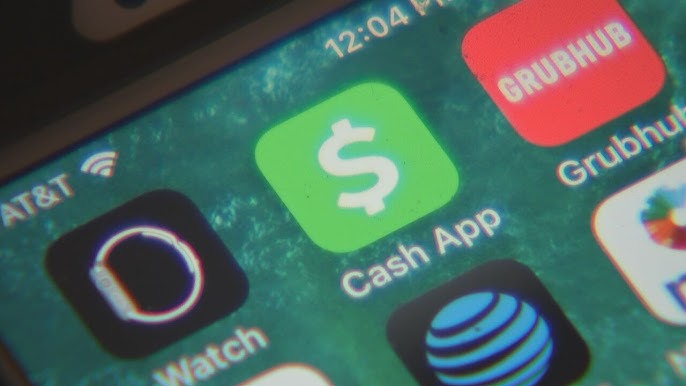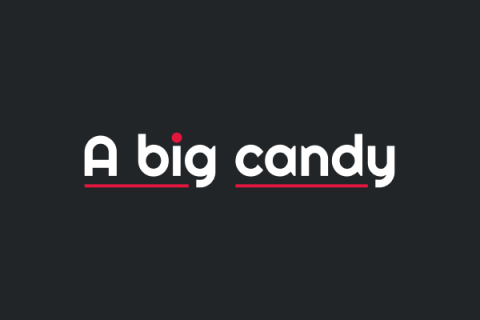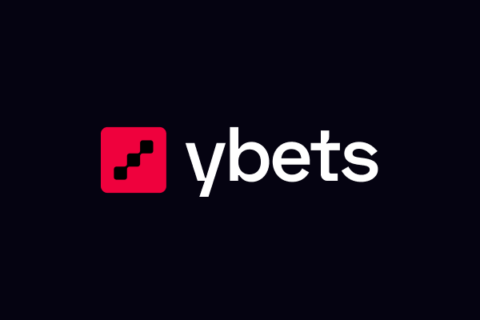
How Does Cash App Work? Step-by-Step Guide & Expert Opinion
CashApp is a US- and UK-focused payment service rotating around mobile transactions connected with both fiat and crypto options. Statistics show that it’s extremely popular among users since by 2024, CashApp boasts 57 million monthly active users and generates $14.7 billion in annual revenue. As a user, you may want to know: how does Cash App work? We are here to explain the main features of the service, including the opportunity to purchase cryptocurrencies.
In a nutshell, this service is multitasking since besides peer-to-peer transactions and direct deposits, customers can get debit cards within the system, open saving accounts, and even invest in stocks and Bitcoin. Moreover, some customers can count on personal loans, which makes CashApp a completely independent financial institution with a range of facilities for different needs.
When you know the basic options of the service, its pitfalls, payment limits, and other aspects, you can count on secure transactions with no unexpected issues. With the help of this guide, you will learn how to send money on Cash App, what details to insert to receive funds, how to use this payment method for online entertainment, including iGaming transactions, and what mistakes to avoid to have a safe experience.
So, here comes the ultimate guide to using Cash App with expert tips and examples!
Understanding Cash App: Important Aspects & Guide
This block will highlight all the essential details you should know about Cash App to start using this method. You will learn how to get your CashApp account, how to link it to your bank account, what fees and limits you can face, how to transfer money from Apple Pay to Cash App, and much more.
Setting Up Your Cash App Account
To start using the method, you need to get the app and create an account within the system. The app is available both at the App Store and at Google Play, so iOS and Android players can find an app for their operating system. These are the steps to start using CashApp:
- Download CashApp for your smartphone’s operating system
- Install the app and enter your phone number or email address to get a confirmation code for account verification
- Enter a unique username, known as a $Cashtag, which will be displayed as the recipient’s name to receive funds
- Optionally, you can link your Cash App account to your bank account or a debit card
- Make sure to set a strong password and enable a PIN code or biometric authentication, such as fingerprint, to protect your financial details
This process takes up to 10 minutes on average, and due to prompts within the app, even novice customers will easily open a Cash App account.
Sending and Receiving Money with CashApp
Once you’ve set up your CashApp account, you can send and receive real money within the service, request money, and even split bills with other users. You can use this guide to send money to a CashApp account:
- Launch the app and tap on the dollar sign icon ($) at the bottom center of the screen
- Input the amount you want to send within your balance
- Tap ‘Pay’ and enter the recipient’s details (such as $Cashtag, phone number, or email address)
- Double-check the details, and optionally, add a note indicating the paymet’s purpose
- Tap ‘Pay’ again to confirm the transaction, after which, the amount will be charged from your linked bank account or Cash App balance
The money is transferred instantly. When you want to receive money through CashApp, you need to send your $Cashtag and wait for the notification. If you request money, you need to use a corresponding widget and enter the person’s data (such as the phone number or $Cashtag). This feature is also commonly used for splitting bills.
The Cash App Balance
Cash App is a virtual wallet for storing and sending funds, so you will have your balance within the system. This balance is displayed when you launch the app. When you send money to other accounts or purchase something, the funds are deducted from this balance, and vice versa. Optionally, you can request a Cash App Card to withdraw cash at ATMs.
Is Cash App safe for storing funds and sharing your financial details? Yes, Cash App uses advanced encryption technologies and allows players to enable a PIN code or use biometric features. Interestingly, the funds held in your Cash App account are insured through Cash App’s partner banks, up to the standard FDIC limit of $250,000.
Once another user sends you the money or you top up your account with any other method, this amount is immediately reflected within the app. We should note that there aren’t direct methods to transfer funds from Apple Pay or PayPal to Cash App, so you’ll have to transfer this money through your bank account.
Investing with Cash App
Optionally, Cash App users can use the platform to invest funds and try out fractional share investing, which means that users can buy portions of a stock rather than whole shares. For example, with a total share cost of $1,000, users can afford purchasing its small part for even $1, once such an offer is accepted by the company. This approach is convenient to diversify the amount to invest and spread the investment across a wide range of companies.
Still, you should be careful and keep in mind that the market is volatile and even the most reliable company can go bankrupt, leading to potential losses. As a fractional shareholder, you can’t influence the processes within the company, so you only track the results and see whether you gain or lose money.
Due to Cash App opportunities, the investment process is straightforward, while the limits are flexible and suit customers with even the smallest budget. When you deal with large amounts, you should also consider this issue. What amount does Cash App report to IRS? Well, the service issues a Form 1099-K if you receive more than $600 in business transactions within a calendar year. If you use Cash App for both personal and business transactions, it’s reasonable to separate accounts.
Fees and Limits
Before you get started, pay attention to the fees and limits within the service. When sending funds through your credit card, you will face a 3% fee, while standard bank account transfers are free. The fee for instant bank transfers sits at 1.5%, and Bitcoin transactions will display a fee based on market activity.
Users can send up to $7,500 weekly. As for the amount to receive through Cash App, it’s $1,000 for unverified accounts, while amounts to receive for verified customers aren’t capped. You can always visit the official website to check current fees and limits.
Security on Cash App: Latest Encryption & Safety Tips
Cash App is a trustworthy payment service with hundreds of positive comments from customers and advanced security tools. Yet, you shouldn’t forget about possible cash app scams and use basic safety tips to protect your personal data and money.
Common Cash App Scams
Unfortunately, scammers don’t miss an opportunity to use even credible payment services for their fraudulent schemes. If you know how they work, you can easily avoid them. Will Cash App refund money if scammed? Unfortunately, the app doesn’t do it, so it’s essential to stay away from such schemes. We’ll highlight the most common Cash App scams and the red flags to be aware of:
- Fake Flipping Schemes: users on social media may post information regarding exchange money services, promising to double or triple the initial payment amount. You are supposed to send the money to a specified wallet and wait for a larger amount within a certain period. For example, a customer should send $10 and get $15. Once the money is sent, the scammer disappears. Promises of guaranteed high returns with little risk are among the main red flags you should be aware of.
- Phishing Attacks: scammers can create email addresses and even domains which may be similar to the Cash App official site. They may send fake information regarding a payment, to receive which, you need to send your personal or payment details. These messages are usually in the Spam folder and may contain grammar or spelling errors. When you get an email of this kind, don’t hesitate to report and get in touch with customer support through the app.
- Other Cash App scams: among the other fraudulent schemes you should be aware of, we can highlight accidental overpayments when scammers pretend to send a larger amount and require users to send a certain amount back, fake investment opportunities which promise large percentages within a short period, and social media giveaways with huge potential prizes where you need to pay for participation.
Protecting Yourself from Scams
Since Cash App is a secure banking option, you can trust its encryption and other safety tools. Furthermore, you can follow a few simple tips to protect yourself from scammers and have a secure CashApp experience:
- Keep your login credentials and PIN codes private and set a strong password.
- Stay vigilant when getting unsolicited messages and verify their sources.
- Check links to the websites before clicking on them and deal only with official sources.
- Don’t search how to delete Cash App history since there is no such feature, and scammers may provide you with fake schemes.
- Avoid pressure tactics and take your time to verify the legitimacy of any offer or investment.
- Report suspicious activity once you get inappropriate emails or see such messages on social media and contact CashApp official support.
Additional Security Tips
In addition to some basic factors, we can also provide you with some more specific tips which will translate into a safe CashApp experience:
- Don’t overlook the two-factor authentication (2FA) on your Cash App account for an extra layer of protection.
- Keep an eye on Cash App updates to benefit from the latest security enhancements and bug fixes.
- Get in touch with official customer support in case of issues of any kind and report to the Federal Trade Commission (FTC) at reportfraud.ftc.gov.
Advanced Cash App Features: Cash Card & Cryptos
Transfers between accounts within the Cash App platform are convenient, but the service has even more advanced features for customers who want to get a physical cash card or purchase cryptocurrencies. We’ll explain these features over here. Moreover, we’ll cover the issue of deleting an account if you don’t want to use the service.
Using the Cash App Cash Card
Our experience shows that it takes up to a few minutes to send a request to order a physical card at Cash App. This can be done directly through the app; you need to tap the ‘Cash Card’ tap and follow the prompts within the platform. After you’ve provided your mailing address, wait for up to 10 business days on average to get the card.
Customers can use the card at ATMs to withdraw funds from the service’s balance and at stores to pay via this card as via regular Visa or Mastercard cards. Fortunately, in case of using Cash App Cash Card for shopping, you won’t be charged fees of any kind. However, ATM withdrawals come with a $2.50 fee from Cash App, and there can be extra charges on the ATM’s side.
Deposits and Withdrawals
You can top up your Cash App balance and withdraw funds from it in a simple way. To deposit real money, you need to link your bank account or debit card to the Cash App platform. This can be done by entering bank details in the corresponding form provided by Cash App. Then, you pick a corresponding option, add the required details, select an amount, and confirm the payment. The money will be displayed in the account at once.
When it’s time to withdraw funds from the Cash App balance, you need to tap the ‘Banking’ tab, select ‘Cash Out’, and enter the preferred amount. Optionally, you can choose the payout speed which suits you, but keep in mind that immediate cashouts require a 1.5% fee.
Sending and Receiving Bitcoin
In this block, you can learn how to send Bitcoin on Cash App or receive payments in cryptocurrency. Due to the in-built features in Cash App, customers can buy, sell, send, and keep cryptocurrencies within the system. That’s how users can buy BTC through Cash App:
- Open Cash App and tap the ‘Investing’ widget
- Select Bitcoin and verify your identity by following the prompts
- Enter the BTC amount you want to buy or sell
- Make sure to consider potential fees associated with the BTC market value
Please note that the BTC price is fluctuating rapidly since Bitcoin is a volatile currency. That’s why customers who are looking forward to investments through cryptocurrencies should consider potential risks.
Deleting Your Cash App Account
Using the Cash App is free, so you won’t be charged for keeping your funds on the wallet, and if you don’t use the wallet for a long time, it’s still charge-free. However, you may want to delete a Cash App account, and this can be easily done through the app settings:
- Open Cash App on your device and head over to the app settings
- Tap on the ‘Support’ widget and select the ‘Something Else’ section
- Choose ‘Account Settings’ and pick an option to close your account
- Ensure you withdraw any remaining balance not to lose funds
- Follow the prompts within the app to finish the process
Conclusion: Is Cash App a Convenient Payment Option?
We appreciate secure banking options which don’t take much time to process a transaction and don’t require extra fees, unless it’s a payment for a faster transaction or a fee associated with ATM withdrawals. That’s why Cash App looks like the perfect way to go. It’s convenient for transfers between users, BTC purchase, and even investment opportunities. Just be aware of Cash App scams to avoid them and keep your login details secure to protect your personal data and money.






